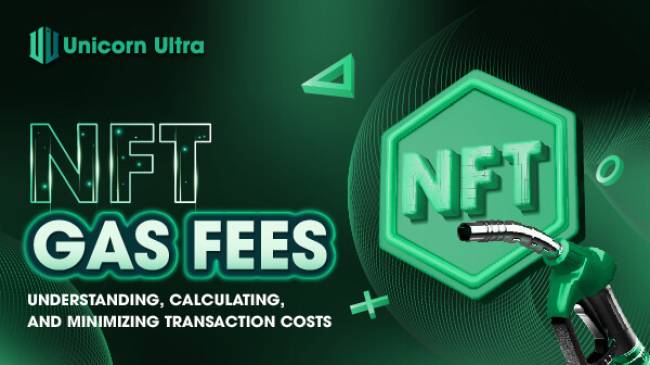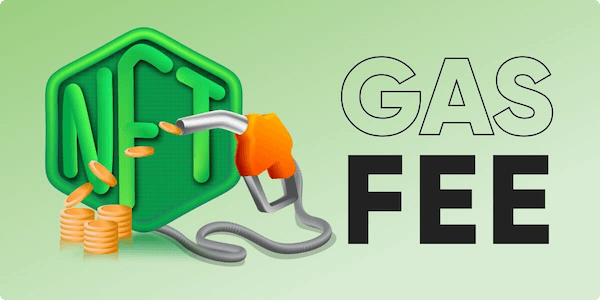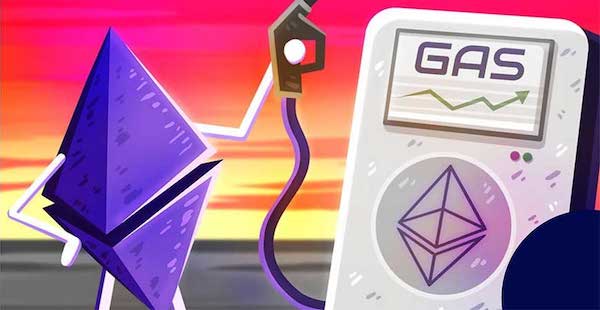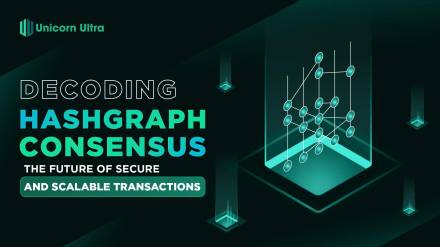Table of Contents
What are NFT gas fees?
NFT gas represents a cost levied on validators to uphold blockchain security. Every blockchain transaction, encompassing NFT and cryptocurrency minting, buying, selling, and transfers, carries a gas fee.

Why Does an NFT Need Gas?
NFTs are created and transferred on blockchain networks, such as Ethereum, which operate on a decentralized system. To ensure the security and immutability of these networks, every transaction must be verified and processed by multiple nodes in the network. These nodes are operated by miners who contribute their computational power to maintain the blockchain. In return for their services, miners receive gas fees.
How is the Gas Fee for an NFT Calculated?
Since the EIP-1559 London upgrade, gas fee calculations have become more straightforward. You only need to consider the current base NFT gas fees, the priority fee, and the amount of gas consumed in the equation:
Gas fees = gas limit x (base fee + priority fee)
Let's break down the key components:
- Gas limit: The maximum number of gas units (measured in gwei) you're willing to pay for.
- Base fee: The fee set by the blockchain network.
- Priority fee: An additional incentive for miners or validators to prioritize your transaction over others.
Most blockchain networks use Gwei to quantify gas fees, which you can think of as the equivalent of coins to ETH dollars.
Every transaction on the Ethereum network incurs gas costs. Gas prices are determined by market demand for network resources at a specific moment. This pricing system ensures network efficiency and optimal resource utilization.
The main factors affecting gas expenses are the transaction size and the urgency of completing the transaction. When network traffic increases, transaction costs rise accordingly. These fees serve as immediate compensation for validators, acknowledging their role in verifying and ensuring the success of your transaction.
NFTs require a gas fee to incentivize blockchain validators to invest their ETH in transaction verification and network security. Without these rewards, miners would have no motivation to increase their processing power for executing smart contract activities. They wouldn't do it voluntarily.
In essence, gas fees are essential for upholding blockchain security and functionality. Without them, there would be no volunteers willing to authenticate and execute transactions while putting their own ETH at risk.

Additionally, network congestion plays a crucial role in determining gas fees. During periods of high traffic, like when a popular NFT drop occurs or during network clogging events, gas fees can skyrocket due to increased demand for computational resources.
Why Are Gas Fees So High?
Several factors contribute to the surge in gas fees on blockchain networks.
Firstly, the increasing popularity of NFTs has led to a significant rise in transaction volumes, straining the network's capacity. This congestion leads to higher competition among users to have their transactions processed promptly, thus driving up gas fees.
Secondly, the design of certain blockchain networks, like Ethereum, requires transactions to be processed sequentially, leading to potential bottlenecks during periods of heavy usage.
How Can You Avoid High Gas Fees?
Despite the challenges posed by high gas fees, several strategies can help mitigate these costs:

Execute transactions during periods of low network demand: Monitor network activity and aim to perform transactions during periods of lower congestion to avoid excessive gas fees.
Layer-2 Solutions: Utilize Layer-2 scaling solutions like Polygon (formerly Matic) or Optimism, which allow for faster and cheaper transactions while still being connected to the Ethereum mainnet.
Batch Transactions: Consolidate multiple NFT transfers or operations into a single transaction to reduce the overall gas fees.
Gas Fee Estimators: Use gas fee estimation tools to get an idea of the required fee for your transaction, ensuring you don't overpay.
Conclusion
NFTs have undoubtedly transformed the way we interact with digital assets, but they come with their fair share of challenges, notably gas fees.
What are NFT gas fees? How is the Gas Fee for an NFT Calculated? After understanding this and implementing smart strategies to minimize gas fees, users can enjoy their NFT experience without having to spend too much money. As blockchain technology evolves, it is likely that further innovations will emerge, addressing these challenges and making NFTs more accessible to all.
Hopefully, with this NFT Gas Fees article from the expert at Uniultra.xyz, you will have a better overview in this field. Thank you for accompanying us.






